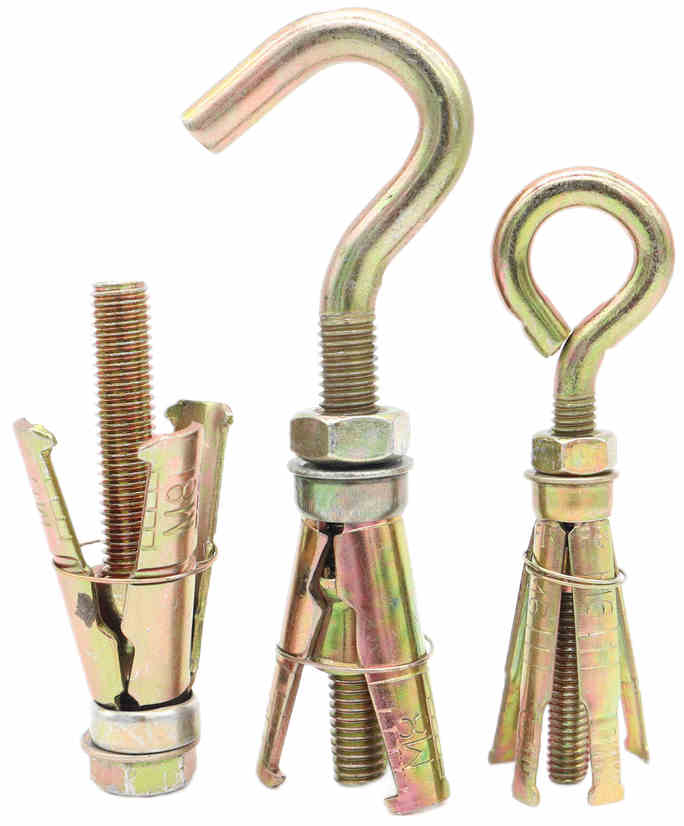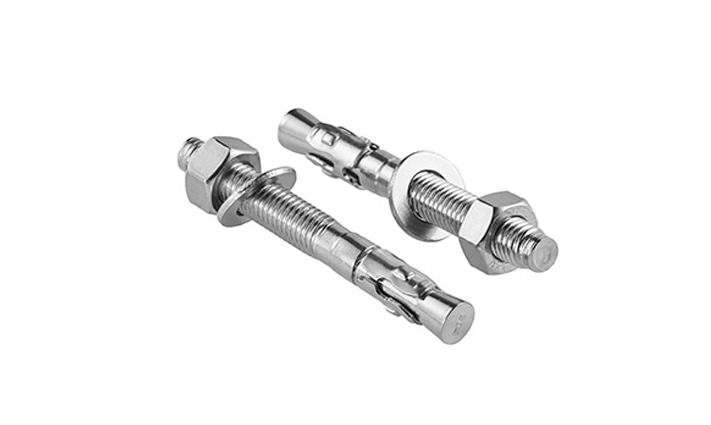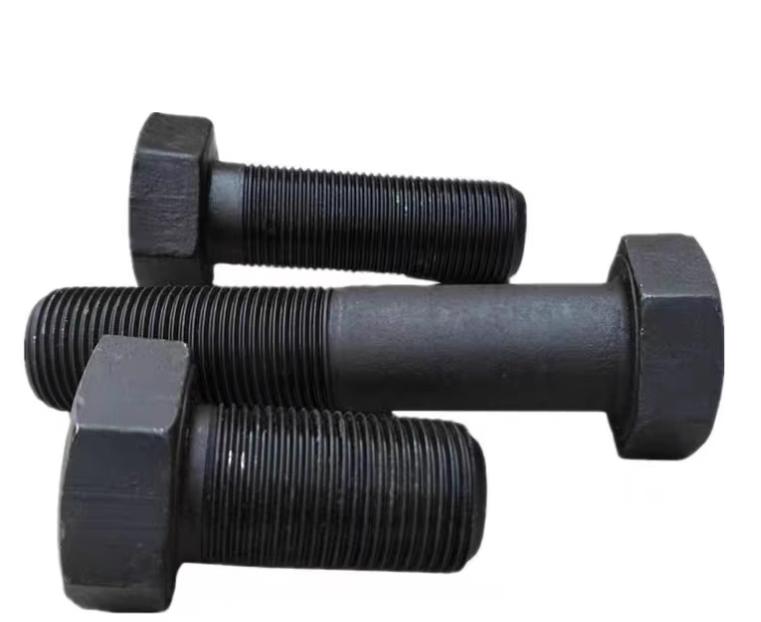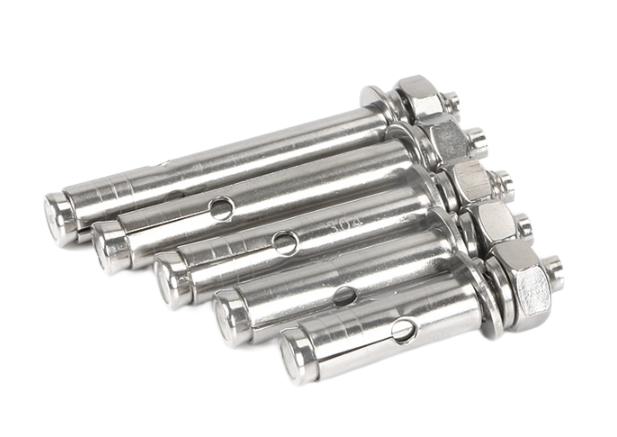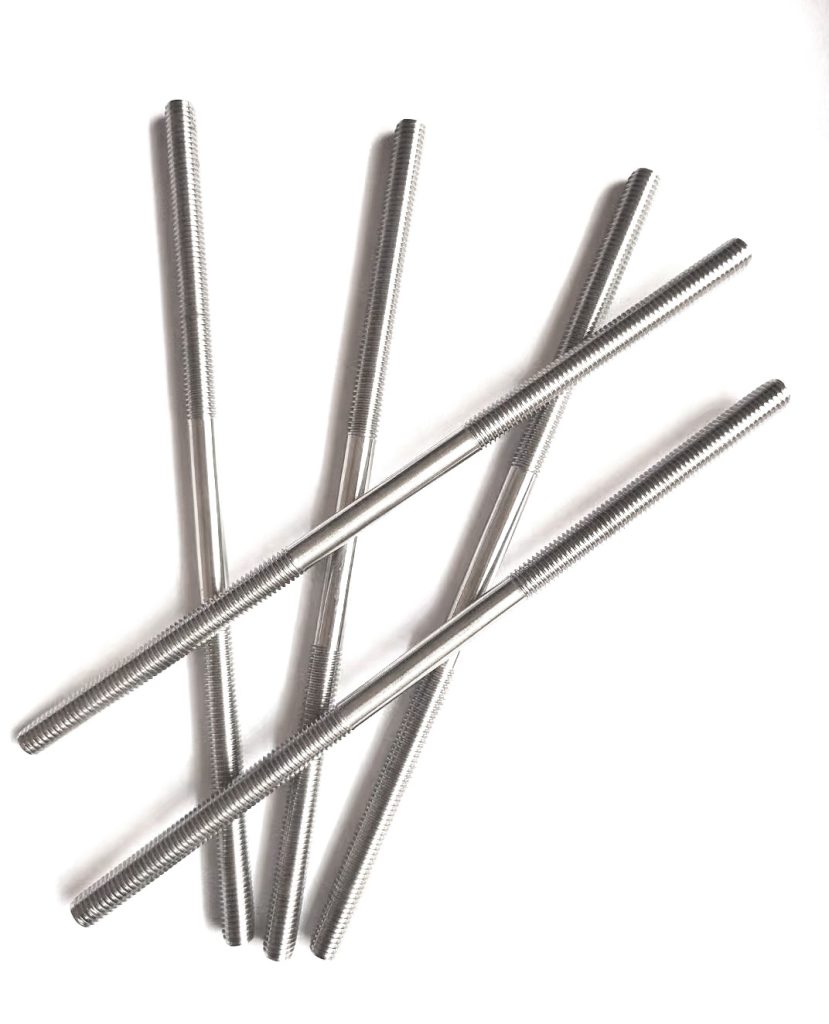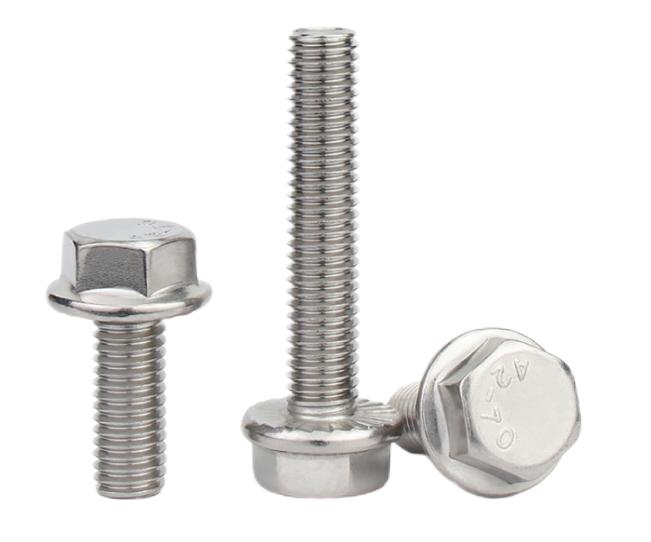Understanding Double-Headed Bolt Preload and Clamping Force
Double-headed bolts, also known as stud bolts, are integral components in mechanical and structural engineering, providing secure connections between different parts. These bolts require precise control of preload and clamping force to ensure the reliability and safety of the assembled structure. Preload and clamping force are closely interrelated concepts that play a crucial role in maintaining the integrity of bolted connections. Understanding their relationship and the factors affecting them is essential for engineers and technicians working with these fasteners.
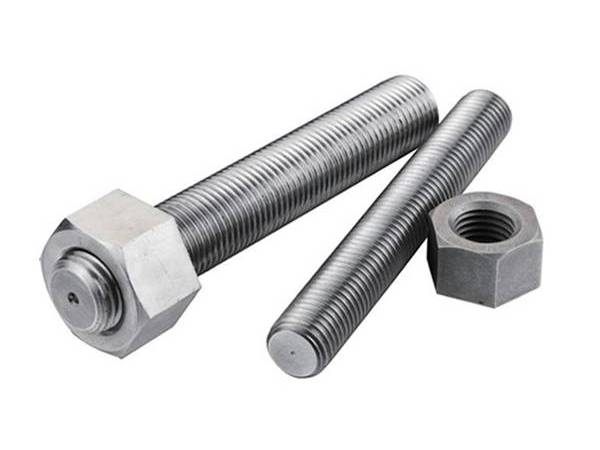
Concepts and Definitions of Double-Headed Bolt Preload and Clamping Force
A. Preload
Preload refers to the internal tensile force generated in a bolt during the tightening process. This force results from the elastic deformation of the bolt material and is influenced by several factors, including the tightening torque, the material properties of the bolt, and the friction between the bolt and the connected parts. The primary purpose of preload is to create a secure connection that can withstand external loads without loosening or failure.
B. Clamping Force
Clamping force is the actual compressive force exerted on the connected parts due to the preload. It ensures that the parts remain in close contact, allowing them to transfer loads effectively. The clamping force must be sufficient to prevent the separation of the connected parts, ensuring the stability and functionality of the assembly.
Relationship Between Double-Headed Bolt Preload and Clamping Force
Double-Headed Bolt preload and clamping forces are interconnected. In the absence of external loads, the preload generated during tightening is entirely converted into clamping force, pressing the connected components together. However, this equilibrium is disrupted when external loads are applied.
If the external load is within the elastic limit of the bolt material, the bolt undergoes elastic deformation, absorbing part of the load and reducing the clamping force. Conversely, if the external load surpasses the preload, the bolt stretches further, potentially leading to component separation and loss of clamping force. It’s essential to note that while the total load on the bolt might exceed the sum of preload and external load, the actual clamping force experienced by the connected components can be lower.
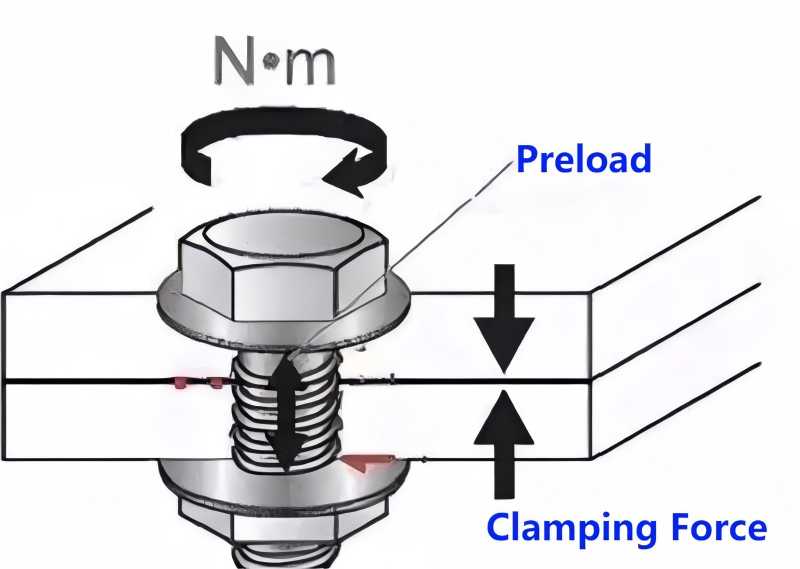
Calculation of Preload and Clamping Force
Precise calculation of preload and clamping force is crucial for ensuring joint integrity. Preload can be determined using the formula:
F = K * d * P
Where:
- F is the maximum assembly preload force (in Newtons)
- K is the preload factor, which depends on the material and surface condition of the connected parts (typically between 0.6 and 0.8)
- d is the nominal diameter of the bolt (in millimeters)
- P is the yield strength of the bolt material (in Newtons)
The preload factor K accounts for various factors, including the friction between the bolt and the connected parts, the surface finish, and the material properties. Accurate determination of K is crucial for ensuring the correct preload.
Clamping force is derived from the preload and is influenced by external loads and working stresses. The actual clamping force can be measured through experimental methods or specialized equipment designed for this purpose. In practice, maintaining the clamping force requires regular inspection and adjustment to account for any changes due to external factors such as vibration or temperature fluctuations.
Preload Factor (K) and Its Determination
1. Typical Range for K
The preload factor K typically ranges from 0.1 to 0.3, depending on the material, surface condition, friction, and thread quality. For lubricated surfaces, K values are generally between 0.18 and 0.25, while for non-lubricated surfaces, K values are lower, around 0.12 to 0.15. Selecting the appropriate K value is essential for achieving the desired preload and clamping force.
2. Examples of K Values in Different Conditions
The specific K value for a given application can be determined based on engineering standards and specific requirements. For example, in applications where high lubrication is used, the K value may be closer to the higher end of the range, while for dry or rough surfaces, the K value may be at the lower end.
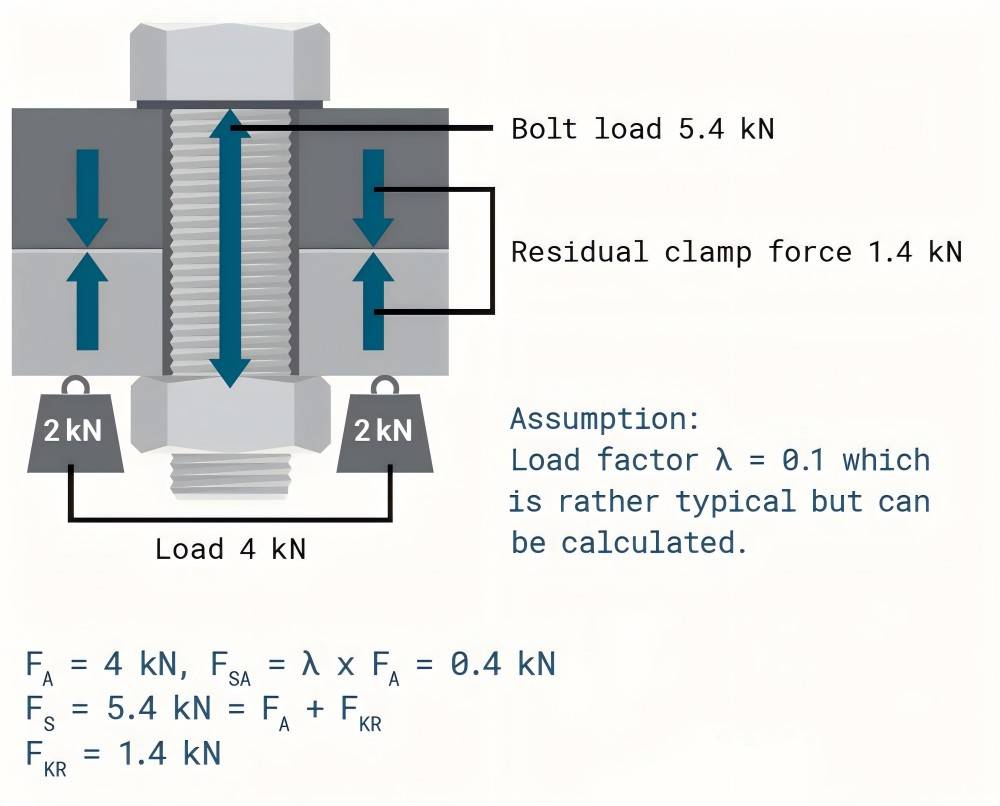
Practical Considerations in Application
1. Environmental and Load
The working environment and load variations significantly impact the performance of double-headed bolts. Vibrations and temperature changes can affect the material properties and the stability of the bolted connection. Engineers must consider these factors when designing and installing bolted connections to ensure long-term reliability.
2. Material and Strength
The strength of the materials used for the bolt and the connected parts imposes limitations on the achievable preload. When the materials of the inner and outer threads are the same, only the strength of the external threads needs to be checked. For connections involving short engagement lengths, non-standard threads, or materials with significantly different strengths, both the internal and external thread strengths must be verified.
3. Installation and Maintenance
Accurate application of preload is essential for the performance of bolted connections. This requires precise control during installation, using calibrated tools, and following standardized procedures. Regular maintenance, including inspection and adjustment of the preload, is necessary to compensate for any changes due to environmental factors or operational loads.
Why Distinguish Inner and Outer Thread Strengths When Calculating Preload and Clamping Force
1. Structural and Load Differences
The structural and load characteristics of inner and outer threads differ significantly. Outer threads, located on the bolt or cylindrical parts, are subjected to tensile forces, while inner threads, found in nuts or bolt holes, are subjected to compressive forces. This difference necessitates distinct design and strength calculations for each type of thread.
2. Design and Strength Calculation
For outer threads, the tensile strength must be checked to ensure they can withstand the applied forces without breaking. For inner threads, the compressive strength must be evaluated to prevent plastic deformation or failure under load. Accurate calculations for both types of threads are crucial for the overall reliability of the bolted connection.
3. Practical Considerations
In practice, manufacturing tolerances, material properties, lubrication conditions, and preload accuracy all impact the performance of the bolted connection. Engineers must account for these factors when designing and evaluating the strength of the inner and outer threads.
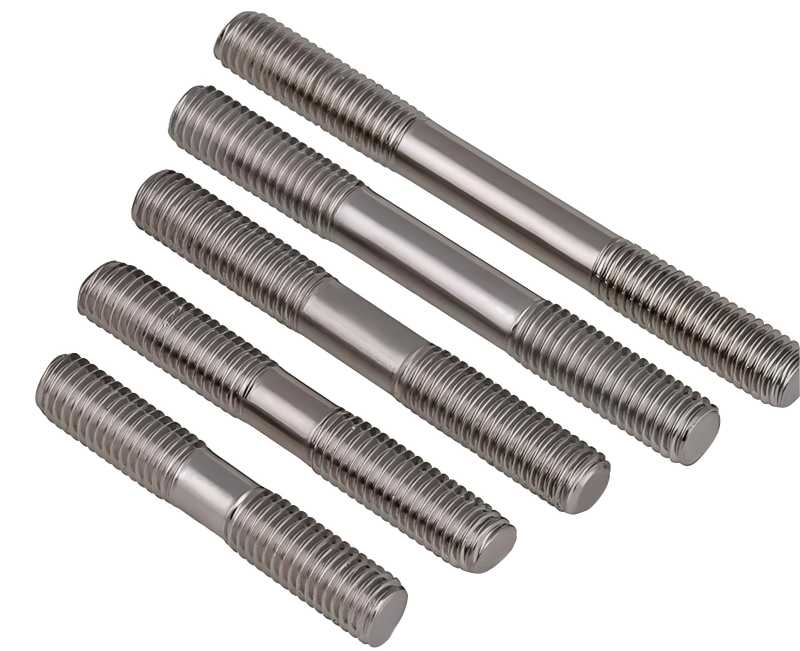
Factors Affecting Clamping Force in Practice
Numerous variables influence the clamping force in a bolted joint. Key factors include:
- Friction: Friction between the bolt and connected components plays a pivotal role in transmitting preload into clamping force. Higher friction coefficients generally result in greater clamping force.
- Geometric Factors: Bolt diameter, pitch, thread angle, and the dimensions of connected components affect the distribution and magnitude of clamping force.
- Material Properties: The strength, hardness, and elasticity of both the bolt and connected components influence their ability to withstand loads and distribute clamping force.
- Thread Accuracy: Precise thread matching is essential for optimal load transfer and prevention of premature loosening.
- Preload Magnitude: Appropriate preload is crucial. Insufficient preload may lead to joint loosening, while excessive preload can cause bolt failure.
- External Loads: Dynamic or cyclic loads can affect clamping force over time due to stress relaxation and fatigue.
- Environmental Factors: Temperature variations and exposure to corrosive environments can alter material properties and impact clamping force.
- Installation Practices: Proper tightening procedures, tool calibration, and worker skill influence the achieved preload and, consequently, clamping force.
- Surface Treatment: Surface treatments like coatings or plating can affect friction and corrosion resistance, indirectly influencing clamping force.
- Lubricants: Lubricants can reduce friction but must be used judiciously to avoid excessive bolt elongation.

Conclusion
In summary, the relationship between preload and clamping force in double-headed bolts is fundamental to the performance of bolted connections. Understanding this relationship and the factors affecting it is crucial for engineers and technicians. Accurate calculation and application of preload, consideration of material and geometric constraints, and regular maintenance practices are essential for ensuring the reliability and safety of bolted connections. By carefully managing these aspects, engineers can achieve secure and stable connections that withstand external loads and environmental challenges.

